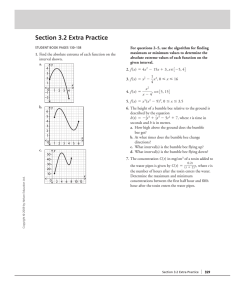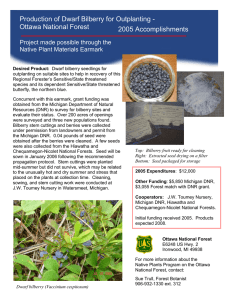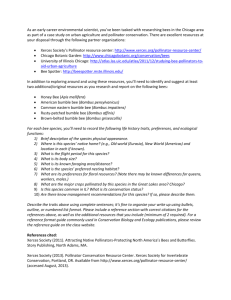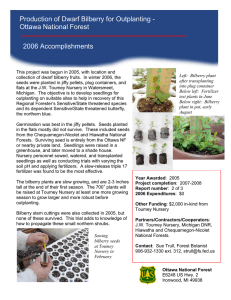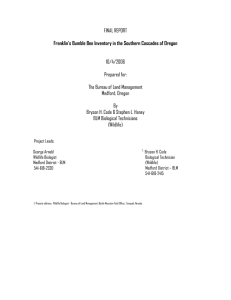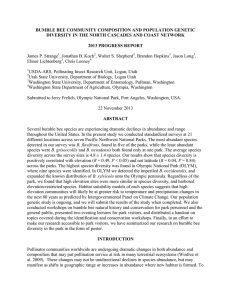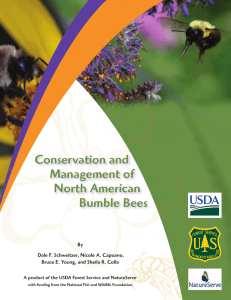Title text here Native Plant Program Highlights Chequamegon-Nicolet
advertisement
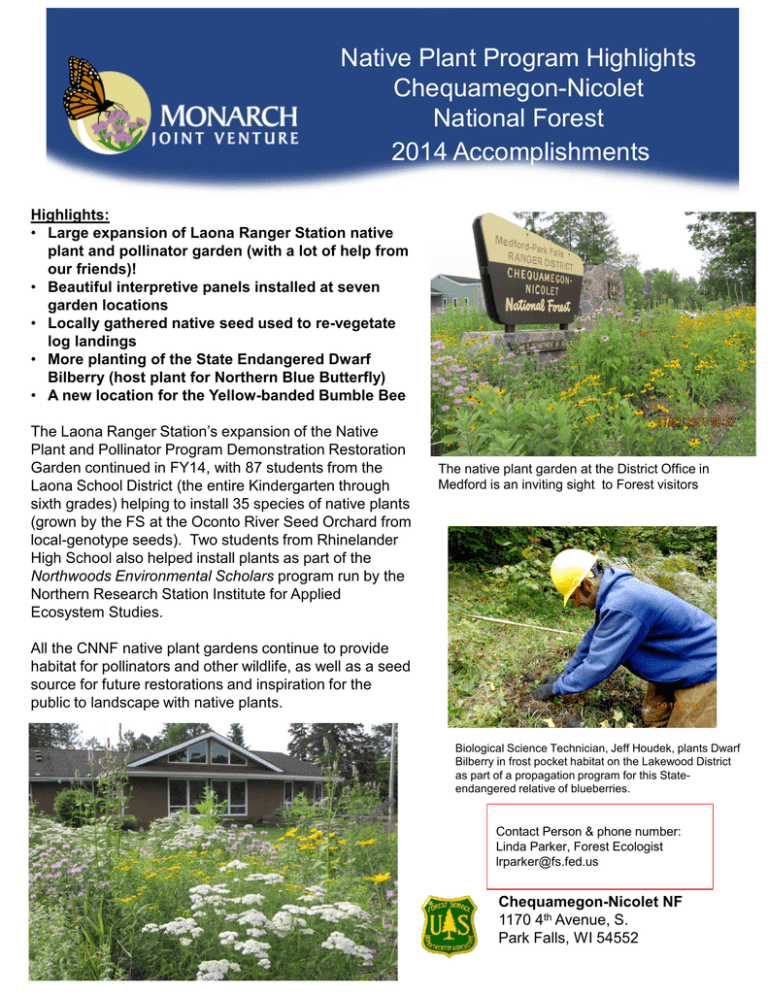
Title text here Native Plant Program Highlights Chequamegon-Nicolet National Forest 2014 Accomplishments Highlights: • Large expansion of Laona Ranger Station native plant and pollinator garden (with a lot of help from our friends)! • Beautiful interpretive panels installed at seven garden locations • Locally gathered native seed used to re-vegetate log landings • More planting of the State Endangered Dwarf Bilberry (host plant for Northern Blue Butterfly) • A new location for the Yellow-banded Bumble Bee The Laona Ranger Station’s expansion of the Native Plant and Pollinator Program Demonstration Restoration Garden continued in FY14, with 87 students from the Laona School District (the entire Kindergarten through sixth grades) helping to install 35 species of native plants (grown by the FS at the Oconto River Seed Orchard from local-genotype seeds). Two students from Rhinelander High School also helped install plants as part of the Northwoods Environmental Scholars program run by the Northern Research Station Institute for Applied Ecosystem Studies. The native plant garden at the District Office in Medford is an inviting sight to Forest visitors All the CNNF native plant gardens continue to provide habitat for pollinators and other wildlife, as well as a seed source for future restorations and inspiration for the public to landscape with native plants. Biological Science Technician, Jeff Houdek, plants Dwarf Bilberry in frost pocket habitat on the Lakewood District as part of a propagation program for this Stateendangered relative of blueberries. Contact Person & phone number: Linda Parker, Forest Ecologist lrparker@fs.fed.us The Laona Ranger Station’s expansion of the Native Plant and Pollinator Program Demonstration Restoration Garden continued in FY14 Chequamegon-Nicolet NF 1170 4th Avenue, S. Park Falls, WI 54552 • A new Yellow-banded Bumble Bee location was discovered on the District in July 2014, when that and several other bumble bee species were observed foraging on American Plantain instead of Common Milkweed, Black-eyed Susan, Common Yarrow, and even White Sweet-Clover (a non-native favored by honey bees). In response, the District added American Plantain to the target species list for seed collection. • Propagation of the Stateendangered plant, Dwarf Bilberry (Vaccinium cespitosum) (which is the host plant for Northern Blue Butterfly) continued in FY14 with 87 plants installed into frost pocket habitat on the Lakewood half of the District. The Dwarf Bilberry plants installed in 2013 were monitored and are still surviving. A Yellow-banded Bumble Bee (Bombus terricola) visits American Plantain (Plantago rugelii), a native groundcover with red leaf stalk bases that distinguish it from the totally green European species (Plantago major) so common in lawns.. • Re-seeding log landings with native species. In 2014, we began providing west zone sale administrators with a native seed mix which they can use to quickly re-seed log landings when they are “closed”. We will expand this effort to the east zone of the CNNF in 2015, and continue to monitor the success of the re-vegetation effort. At seven CNNF administrative sites, interpretive signs now afford visitors an opportunity to discover the role of pollinators in the native ecosystems of northern Wisconsin, and find inspiration to plant pollinator-friendly native plants in their own yards and flowerbeds.

